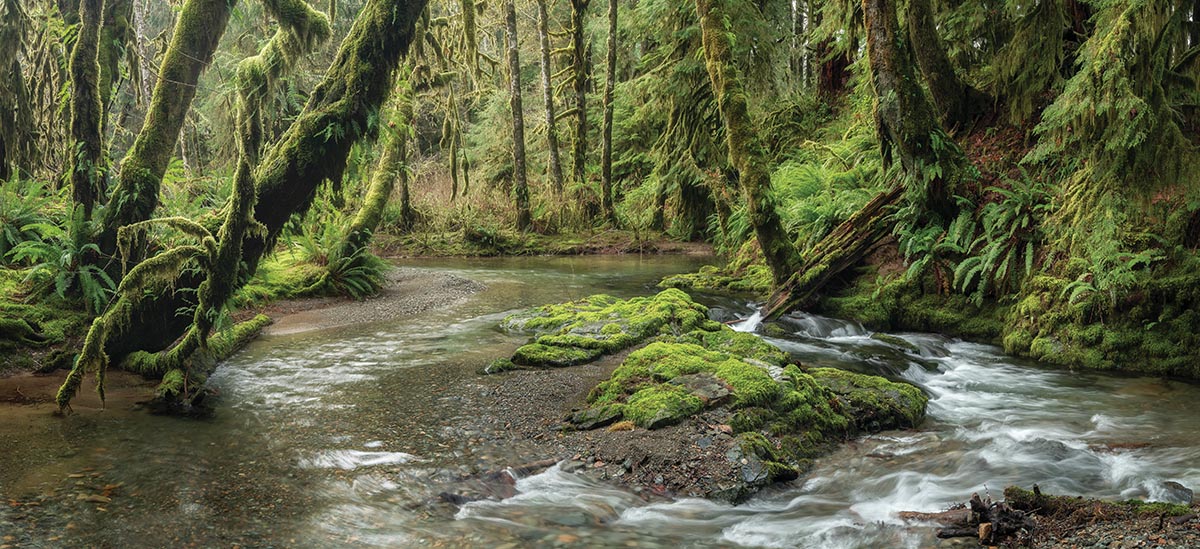For 25 years, nature-loving photographer Adam Gibbs pretty much had his dream job: photographing the many gardens across North America for Cornwall Publishing, a small company that published four magazines on gardening. “Each year, the writers would give me a list of gardens they wanted photographed,” Gibbs explains, “and then I would just spend spring and summer flying across Canada photographing gardens.” The travel enabled him to explore his passions for rock climbing and backpacking as well as landscape and nature photography, which he engaged in as a hobby.
The company was shuttered in 2014, and Gibbs was suddenly without the steady job he’d adored. He did what a lot of photographers do: He delved into the business of workshops. Getting those workshops off the ground was another matter. “I had a hell of a time getting going,” he admits. “My business had been about selling the rights to photographs and not education.” Eventually, he started a YouTube channel featuring photography education, a move that not only attracted students to his workshops but ultimately saved his business. “Ever since then, I have not looked back.”
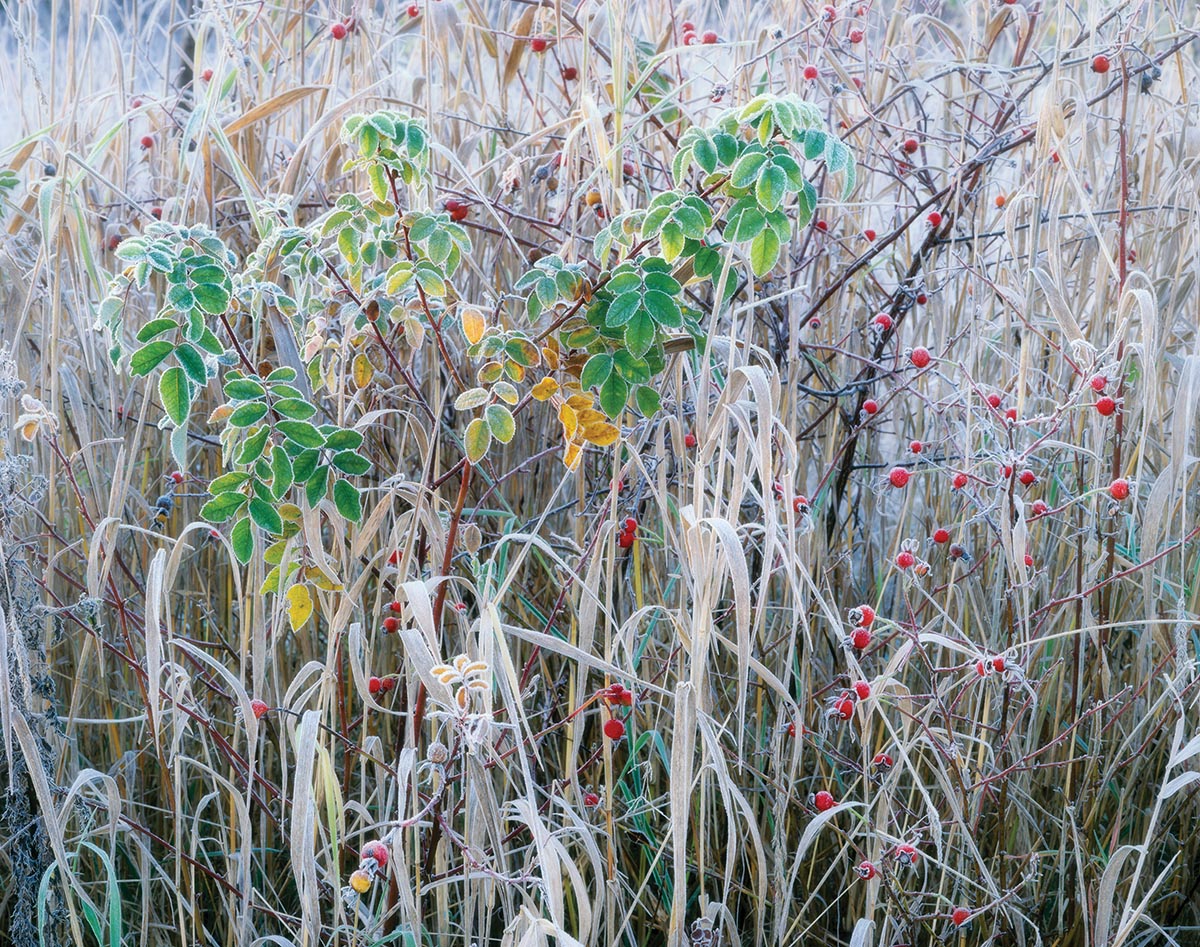
REINVENTION
What the YouTube channel unexpectedly gave him that he didn’t have as an editorial photographer was a diversity of income. “The nice thing is that not all my eggs are in one basket,” he says. “Now I have income coming from all different places, so if one fails at least I have a backup plan.” Ad revenue from the YouTube channel is low, he admits, but because he has a captive audience, he’s been able to attract sponsorships, which is a solid source of income for him. That same audience will also purchase other things from him. He’s published one book and is working on another, has offered video courses, and sells prints. “A big hunk of income comes from that,” he says. In addition, he hosts photography workshops. He plans to host eight or nine in 2024 (any more than 10 will burn you out, he says), teaming up with two photographer friends. They’re based in the United Kingdom and Scotland and organize workshops there, while Gibbs takes on workshops that take place on Vancouver Island, where he’s based.
Right now, Gibbs is in the process of designing his second book. His first was published by Kozu Books, which handled every facet of the process—design, editing, printing, distribution.

“It was great for a first project because there was no risk and I really didn’t have a clue what I was doing,” Gibbs says. “And because I have that captive audience, we were able to have presales of the book and sell enough to at least pay for the printing.” The only drawback is that Kozu took a 70% cut of all the sales of the book, which is typical in the publishing industry.
“This time around I am doing the whole printing process, the whole design, and self-publishing myself because obviously there is more money in it doing it yourself,” Gibbs says. To organize the printing, he’ll use a broker, who will be paid a few thousand dollars. The drawback is that Gibbs will have to put up the money for printing and will handle distribution himself. Based on his first book’s sales and thanks to his loyal YouTube followers he’s confident that sales will pay for the printing, which is expensive.
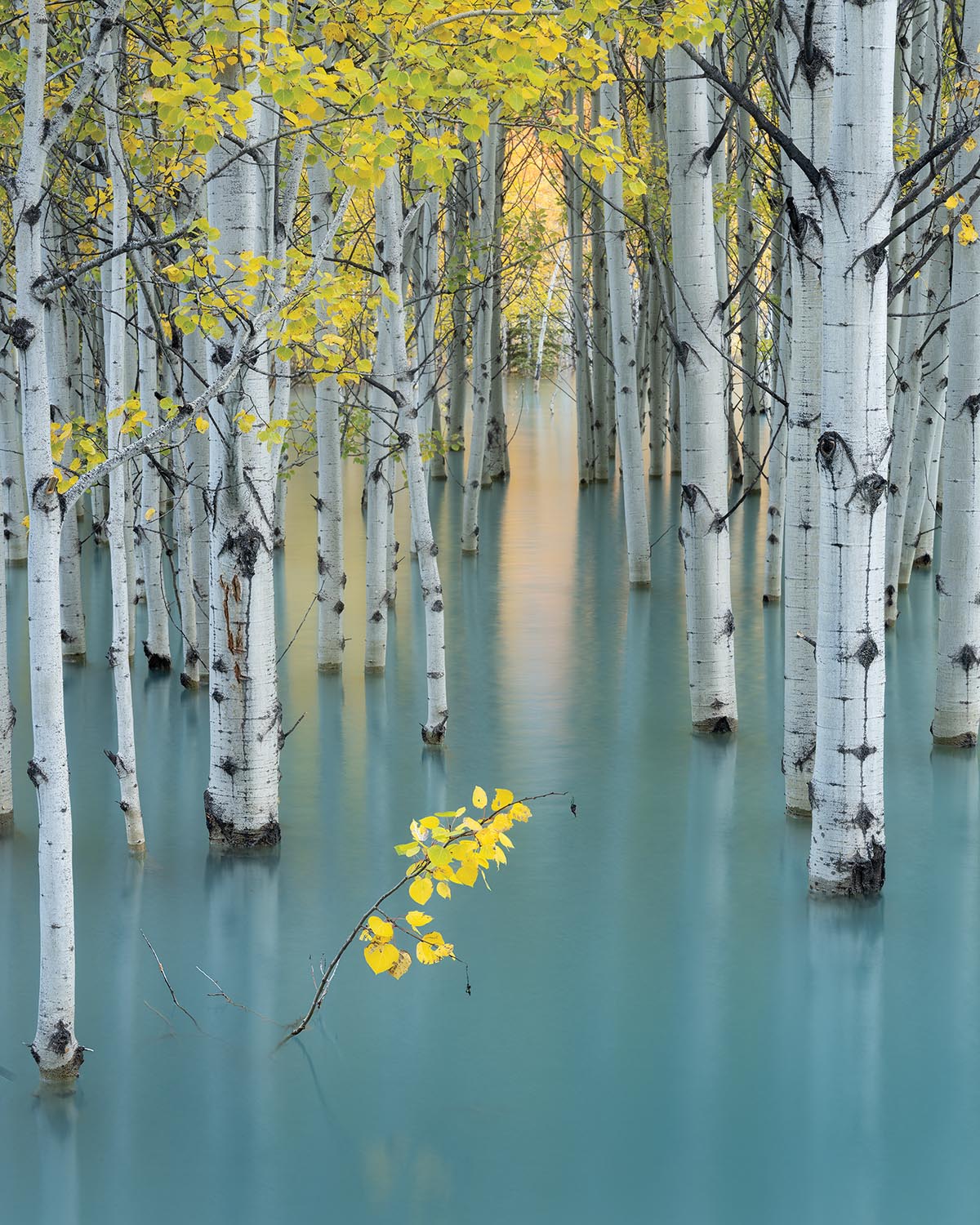
NATURE PHOTOGRAPHY TIPS
Based on decades of landscape photography and his time educating other photographers, Gibbs offers some advice for photographing in nature.
Get to know the area before you start taking photos. In the same way that a portrait photographer will capture better portraits by first getting to know the subject, nature and landscape photographers will capture better images when they give themselves time to explore the area before diving into specific compositions, says Gibbs. He usually roams a spot for as long as he can, taking a few simple snaps with his cell phone before deciding what it is he’d ultimately like to capture there.
Evaluate the scene before deciding on technique. For example, for water shots, Gibbs first decides what he wants to communicate with the photo. If he wants to capture the rage of a waterfall crashing against the rocks, then he goes with a faster shutter speed to freeze that intense moment of impact. If he wants to convey calmness, he adds an ND filter to smooth out the distracting ripples in a wavy ocean or lake.
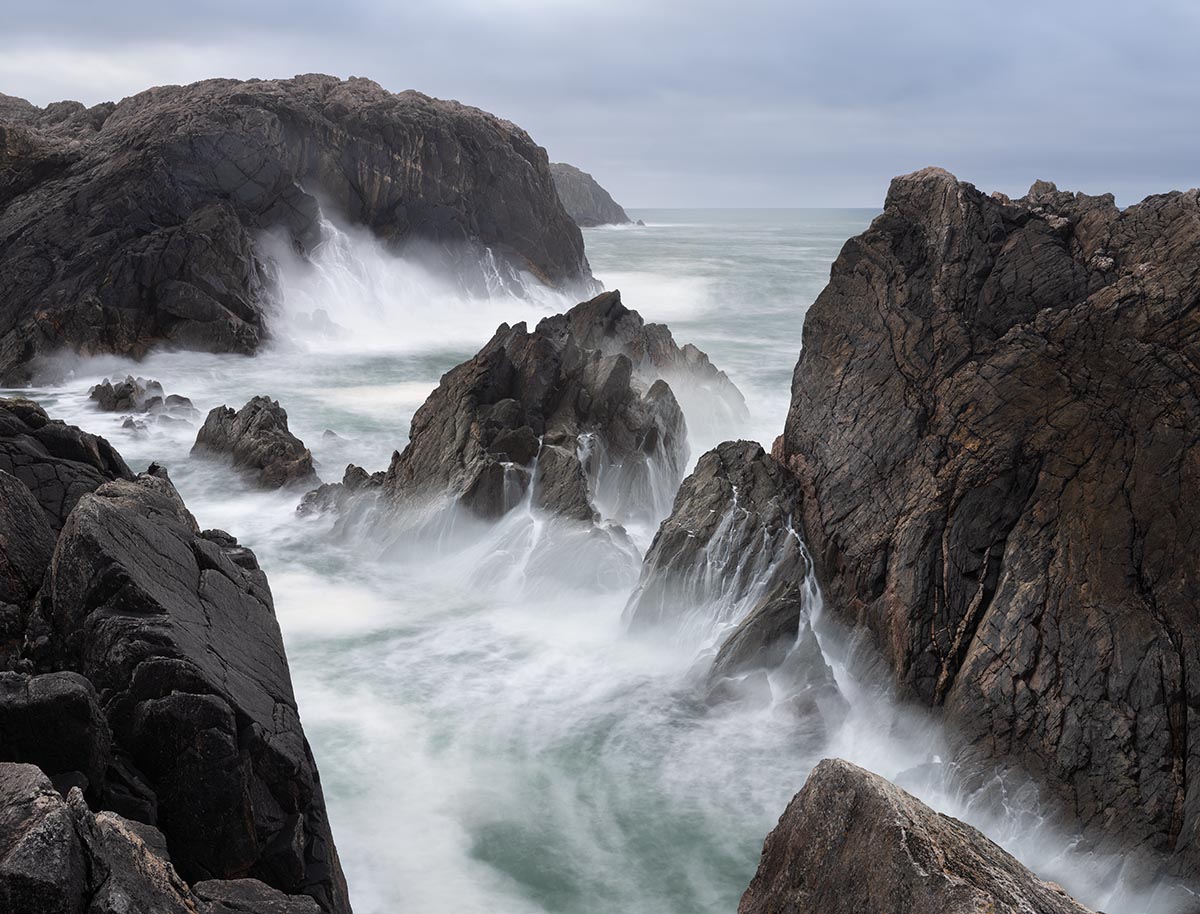
Compose around the light. Most of Gibbs’s compositions are based on the light, not on the subject. Faced with a gnarly, interesting tree and a standard, uninteresting tree bathed in the perfect light, he’ll choose to compose around the light every time. “If you don’t have the light, it isn’t going to work out,” he says. That goes for any photo.
Be patient. One of the biggest mistakes he sees workshop students make is rushing to capture a little of everything. But nature isn’t going anywhere, so unless the light is changing at a rapid pace, there’s really no reason to hurry, he points out.
Get it in camera. Beginners tend to overprocess their work, using every slider in their program, he notes. Gibbs coaches students that that isn’t necessary. In addition, “the part that everybody enjoys is being out there taking photographs,” he notes. If you don’t find processing photos on a computer enjoyable, then reduce the amount of time you need to dedicate to it by taking time with your technique when you make the shot.
Know your weather conditions. In his garden photography days, Gibbs preferred overcast, flat light that enabled him to make photos throughout the day. For grand landscape shots, he loves fleeting moments when sunlight peeks through clouds and bathes one part of the landscape in dramatic light. On harsh sunny days, he pivots to close-ups and photographs in the shade, sometimes using a scrim to reflect light where he needs it.
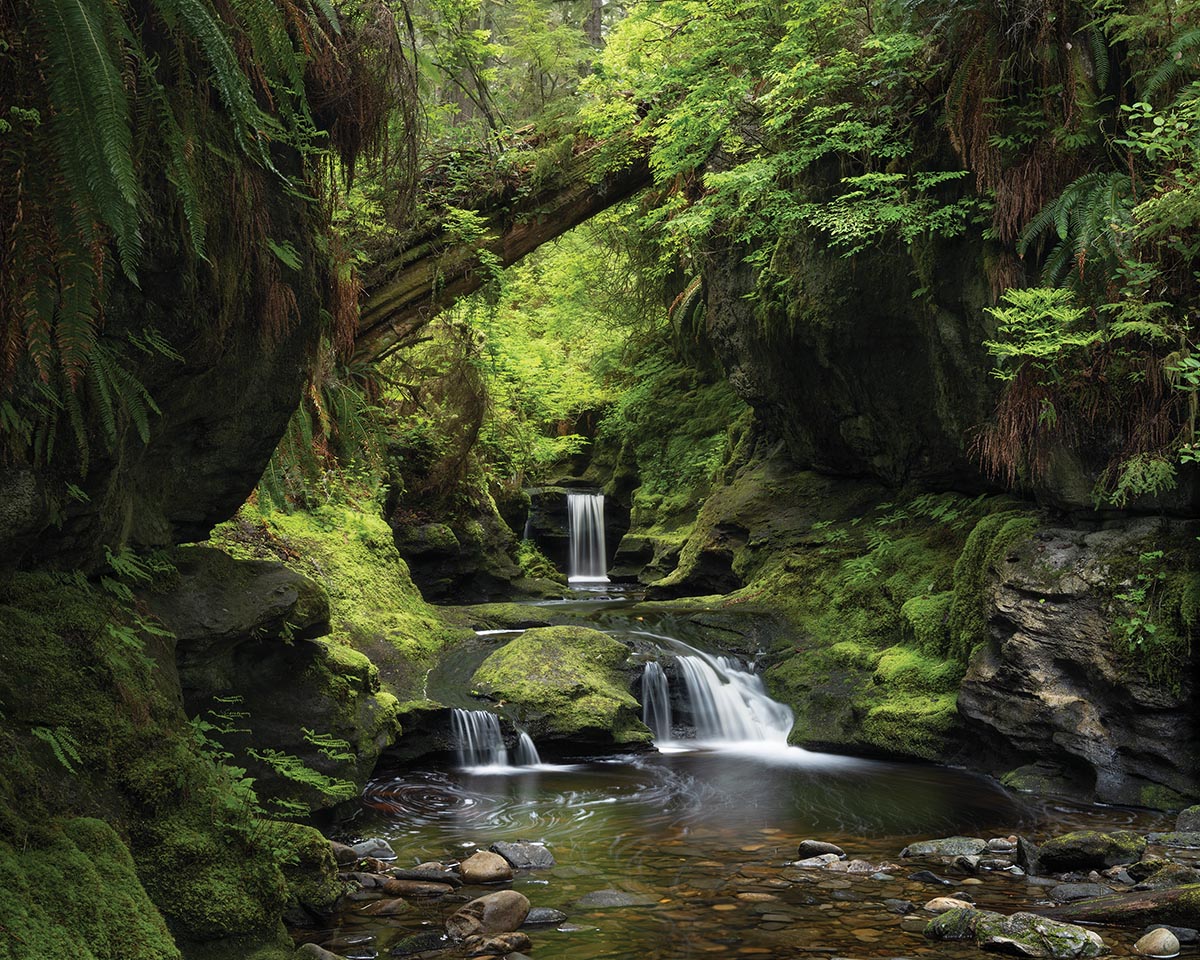
LETTING THE LIGHT IN
Though Gibbs has photographed nature in places such as Scotland and Africa, his favorite location is close to home: Carmanah Walbran Park on the west coast of Vancouver Island. “Carmanah was saved in the ’90s and it’s basically an old growth forest,” he says. “There are very little old growth forests left on the island.” He returns to the park once or twice a year, referring to it as his happy place.
While it’s lovely to be in the dense forest, one drawback about his happy place, he notes, is that it’s difficult to photograph. It’s a lush forest, overgrown and chaotic, with few spaces for the light to peek through. To overcome that challenge, he seeks out the fringes of the forest that back up to a river or creek, or areas where trees have fallen and left a hole in the canopy. “You will get great ambient light coming through those gaps, and that is what I try to focus on,” he says, as well as smaller vignettes rather than expansive landscape shots.
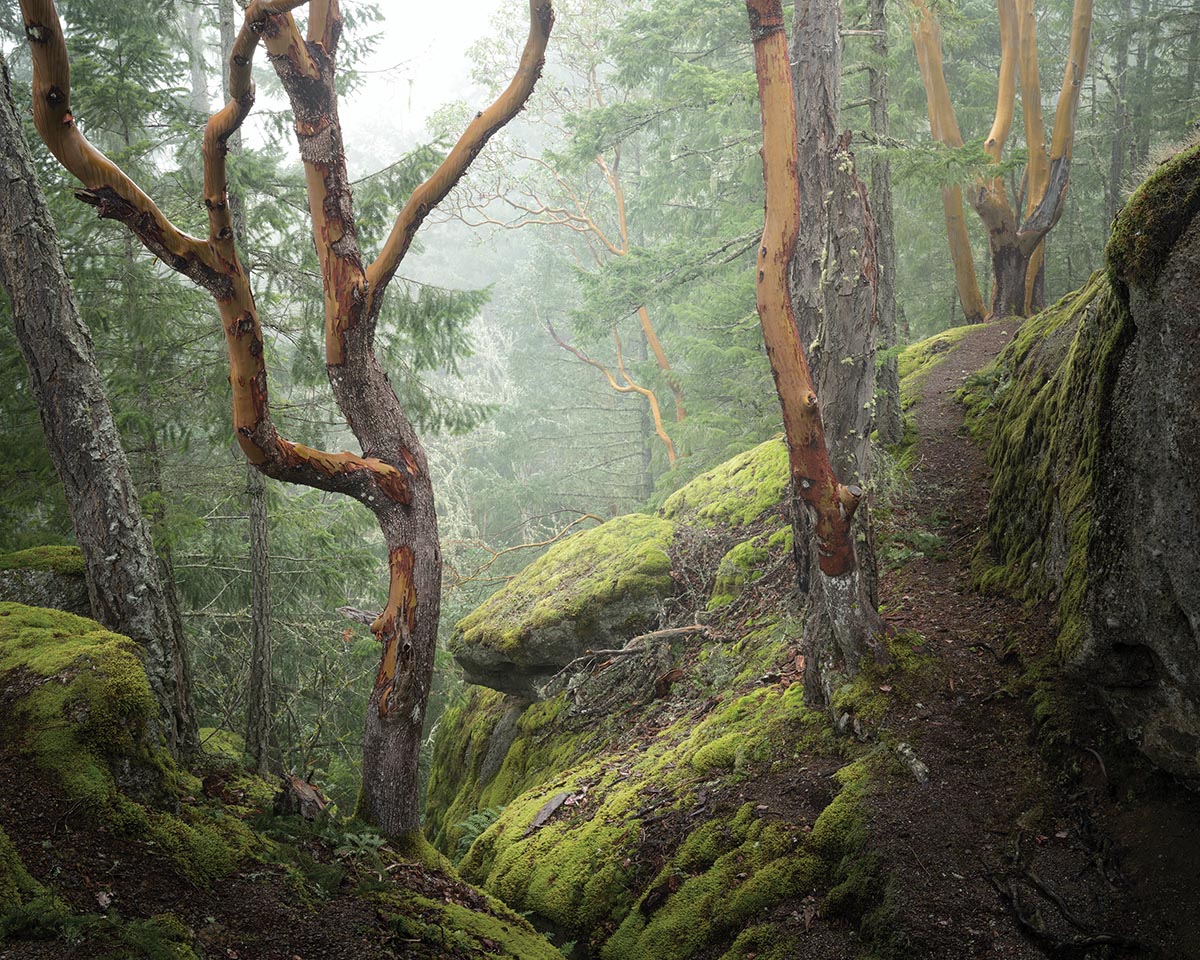
There was a time when Gibbs was heavy on the post-processing, he says, increasing the contrast in his photos for a dark and brooding mood. But these days he lets the mood of the landscape speak for itself. “The light dictates what kind of mood it’s going to be. ... Most of my images these days tend to be quite bright, not too contrasty, and I open up the shadows quite a bit. I don’t want them to be dark and brooding and sad. A lot of these places, when I’m there, that’s not how I feel. So why should my images look that way?”
Amanda Arnold is a senior editor.

